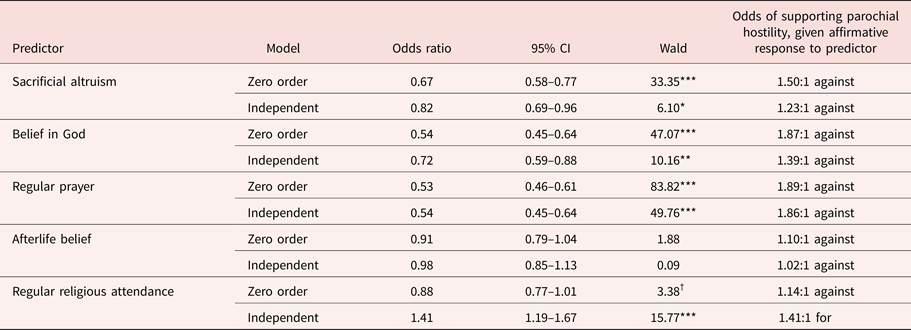In the originally-released pdf, the word “and” within quotation marks was accidentally and erroneously inserted, contrary to the instructions of the author, before the final word of the abstract in the commentary by Hansen (2018) on the target article by Whitehouse (Reference Whitehouse2018).
The abstract should read as follows.
Abstract
Fighting and dying, or what Whitehouse calls “out-group hostility” and “extreme self-sacrifice,” are not conceptually overlapping, but in fact are highly distinguishable, both theoretically and empirically. I present empirical evidence from a reanalysis of Ginges et al. (2009, Study 4), demonstrating the potentially inverse relationship between “parochial hostility” – fighting and “sacrificial altruism” – dying.
We regret the error and we have corrected the abstract online.
In addition, there is an error in the note to Table 1 in the commentary. The note should read as follows:
†p < .10 *p < .05 **p < .01 ***p < .001
The table with the corrected note follows:
Table 1. (Hansen) Odds of blaming people of other religions for the world's problems (parochial hostility) as predicted by sacrificial altruism and other religiosity measures

†p < .10. *p < .05. **p < .01. ***p < .001.



